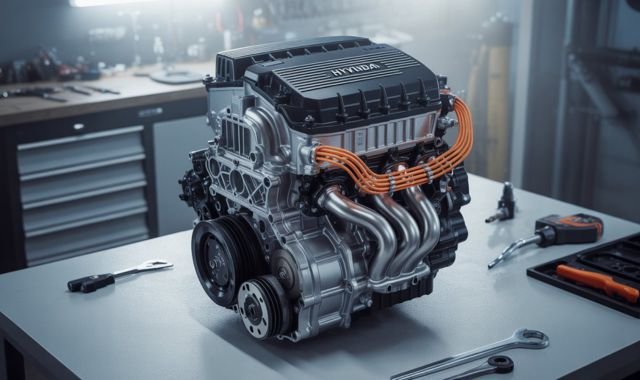Your Hyundai ix35 is designed to deliver a smooth and reliable driving experience, but like all vehicles, its engine can develop problems over time. Knowing how to spot and diagnose engine issues early can save you a lot of time, money, and stress. Even if you’re not a professional mechanic, there are several ways you can assess the health of your ix35 engine and decide whether it needs professional attention.
Pay Attention to Unusual Sounds
One of the easiest ways to catch engine problems is by listening closely. Engines typically have a consistent sound when running smoothly. If you start hearing knocking, tapping, rattling, or grinding noises, these could indicate trouble beneath the hood.
Knocking or pinging sounds might mean there’s an issue with the fuel mixture or ignition timing. Tapping noises often point to valve train problems, while grinding could suggest worn-out components or bearing failures. If your ix35 is making any strange noises, it’s a clear sign that your engine deserves a closer look.
Observe Your Vehicle’s Performance
How your ix35 feels while driving is a great clue about the engine’s condition. Notice if the engine hesitates when accelerating, struggles to reach higher speeds, or feels weaker than usual. These symptoms can indicate that the engine isn’t delivering power efficiently.
Performance issues may arise from clogged fuel injectors, faulty spark plugs, or even problems with the turbocharger if your model has one. Reduced power not only impacts your driving enjoyment but can also be a safety risk, especially when quick acceleration is necessary.
Check for Warning Lights on the Dashboard
Modern cars like the ix35 are equipped with onboard diagnostic systems that monitor various engine components. When something is amiss, the check engine light or other warning indicators will illuminate on your dashboard.
Don’t ignore these lights even if your car seems to be running fine. The warning is your vehicle’s way of telling you that a sensor or system has detected a fault. Using an OBD-II scanner, which you can buy or have a mechanic use, will help you retrieve trouble codes and understand what the engine is struggling with.
Inspect Exhaust Smoke and Smells
Your ix35’s exhaust can reveal much about the engine’s internal health. Keep an eye on the color and consistency of the exhaust smoke. Normal exhaust might have a faint vapor on cold starts, but thick smoke or colored emissions are cause for concern.
Blue smoke indicates oil burning inside the engine, possibly due to worn piston rings or valve seals. White smoke could mean coolant is leaking into the combustion chamber, suggesting a head gasket issue. Black smoke points to too much fuel being burnt, which might be caused by faulty fuel injectors or air filter problems.
Along with smoke, be aware of unusual smells coming from the engine area, such as a burning odor. This could be leaking fluids or electrical issues, which need immediate attention.
Listen for Rough Idling and Vibrations
When your ix35 is parked and the engine is running, it should idle smoothly and quietly. If you notice the engine shaking, vibrating excessively, or running roughly, it often points to misfires or fuel delivery problems.
Rough idling may result from dirty fuel injectors, worn spark plugs, or faulty ignition coils. Vibrations can also mean that engine mounts are failing to hold the engine securely, causing extra movement. These symptoms should prompt a thorough engine inspection to prevent further damage.
Keep an Eye on Engine Temperature
Overheating is a serious problem for any engine, including your ix35. Watch the temperature gauge on your dashboard carefully. If it rises above the normal range or if steam appears from under the hood, it’s time to stop driving and investigate.
Possible causes of overheating include coolant leaks, a failing thermostat, radiator issues, or a broken water pump. Driving with an overheated engine risks warping engine parts or blowing the head gasket, leading to expensive repairs.
Monitor Fuel Efficiency Changes
A sudden drop in fuel economy can be one of the first signs that your ix35’s engine isn’t performing optimally. If you find yourself filling up the tank more often than usual without changing your driving habits, this might signal inefficiencies.
Engine problems like clogged air filters, dirty fuel injectors, or malfunctioning sensors can cause your engine to burn more fuel than necessary. Tracking your mileage and noticing changes can help you diagnose issues before they worsen.
Conduct a Visual Engine Inspection
You don’t need to be a mechanic to perform a basic visual inspection of your engine bay. Look for obvious signs such as oil leaks, cracked or loose belts, and worn hoses. Leaks can appear as oily spots or puddles beneath your car, which may indicate gasket or seal problems.
Inspecting the condition of belts and hoses is important because if they’re cracked or brittle, they might break or cause engine malfunctions. A quick visual check can help you identify potential issues early.
Check the Oil and Other Fluids
Regularly checking your engine oil is vital for engine health. Low or dirty oil can cause serious damage over time. Pull out the dipstick, wipe it clean, then reinsert and check the oil level and color. Fresh oil is amber and translucent; if it looks dark, gritty, or milky, it could indicate contamination or internal engine problems.
Also, keep an eye on other fluids like coolant, brake fluid, and transmission fluid. Proper fluid levels and clean fluids are essential to keep the engine and other systems running well.
Use Diagnostic Tools for Deeper Insights
If you’re comfortable with technology, investing in an OBD-II scanner can be a game-changer. These devices plug into your car’s diagnostic port and read fault codes stored in the engine computer. These codes offer detailed information about what might be causing the check engine light to come on or other issues.
By interpreting these codes, you can decide whether the problem is minor or needs professional repair. Many auto parts stores offer free scans, so it’s easy to get started.
When to Call a Professional Mechanic
While you can do a lot to diagnose engine problems on your own, some issues require expert attention. If you notice persistent symptoms like engine knocking, overheating, or your check engine light stays on despite resetting, it’s best to take your ix35 to a trusted mechanic.
Professionals have the tools and knowledge to perform detailed inspections, repairs, and preventive maintenance. Early intervention often prevents small problems from turning into major repairs.
Conclusion: Stay Proactive for Peace of Mind
Your ix35’s engine is the powerhouse that keeps your car moving. Taking time to observe, listen, and inspect your vehicle regularly helps you catch problems before they spiral out of control. From strange noises and warning lights to fuel economy and exhaust smoke, these signals tell a story about your engine’s health.
Being proactive with simple checks and knowing when to seek professional help ensures your ix35 remains reliable and safe. With a little attention and care, you’ll enjoy many worry-free miles ahead.



